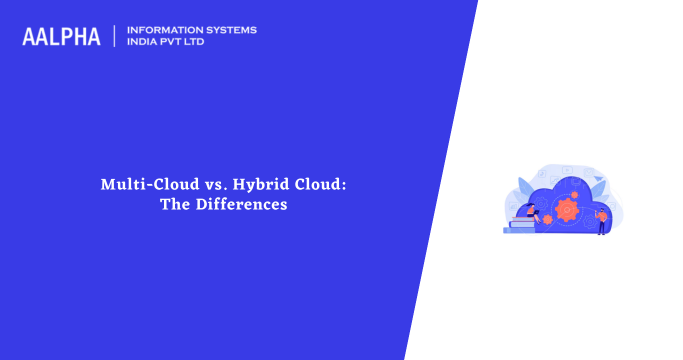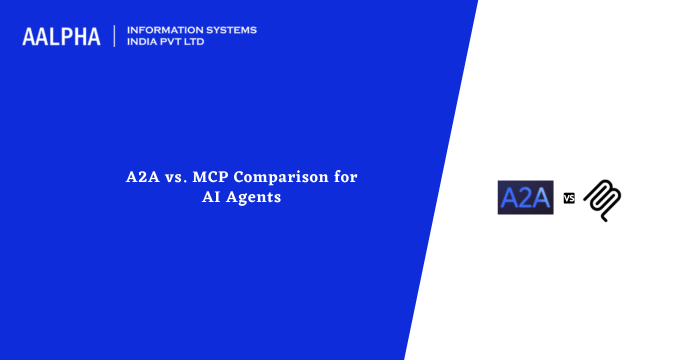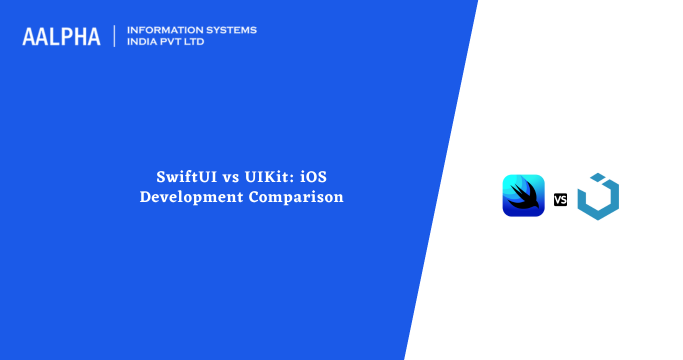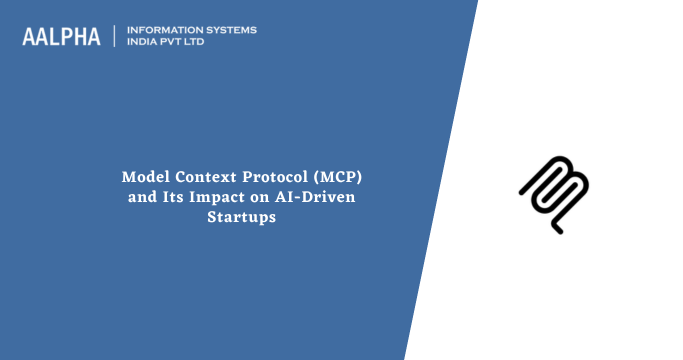Currently, you won’t meet a single cloud solution. Several cloud technologies have matured and advanced to align with business requirements and use cases. A cloud ecosystem may include compliance, infrastructure, security concerns, etc. Most organizations are confused about ways of adopting the cloud and are torn between multi cloud and hybrid cloud.
The multi cloud strategy involves multiple or more clouds of the same type from various public or private vendors. A hybrid cloud strategy is a deployment strategy combining clouds of different types, that is, merging public and private clouds to enhance control. The article discusses the distinguishing factors between the multi-cloud vs. hybrid cloud.
Understanding the Multi Cloud
The multi cloud approach is a cloud deployment strategy where companies or businesses concurrently use multiple public cloud services to achieve particular goals or objectives like application hosting, data storage, or processing. Each cloud provider is chosen independently according to their strengths and weaknesses. This implies that the organization leverages each provider’s strengths to minimize the risks when you depend on a sole cloud provider.
Deploying the multi cloud strategy helps a business integrate several cloud services to create a single cloud environment. The organizations achieve this through unique APIs for access, interconnectivity, and management tools. Management of the cloud services is at a central position, and you can seamlessly move workloads between various cloud providers whenever needed. You can host applications on AWS (Amazon Web Services), deploy other applications, data, and tasks on Google Cloud Platform, and run other services on Microsoft Azure. The strategy helps achieve flexibility, high performance, and cost benefits.
Benefits of the Multi Cloud Strategy
Many businesses are adopting the multi cloud architecture in their operations. There are many benefits associated with choosing the multi cloud approach. Here are some of the benefits:
-
No need for excessive local infrastructure
A company will outsource some of its on-premises infrastructure to third-party vendors to reduce the burden of hardware, software, maintenance, and support requirements. For instance, you may decide to host your business email with Microsoft Exchange Online or Google Business, which will be doing virus detection & cleaning, fighting against phishing, and other tasks for you. Having this within your in-house exchange server means more expenses in implementing sophisticated virus and spam detection tools.
-
Usage of specialized services
A cloud provider will specialize in offering specific services aligning with their background and strengths. This implies that a business can opt for one cloud provider to host its test and development workload and then go to another provider for machine learning and advanced AI services.
-
Cost management
To install local infrastructure, you will need capital investment. When you go for cloud services and resources, you will implement the pay-as-you-go model, where your usage determines the cost you pay. For instance, the cost of using a SaaS infrastructure is dependent on the number of users, while other cloud platforms could charge recurring monthly fees. Providers document such costs, and companies will enjoy cost-effective deployments.
-
Enhanced ROI
You generally need lower upfront costs since the provider handles most of the services and infrastructure. The vendor deals with making the servers available and managing security updates. In the short term, businesses will need less capital input and enjoy cost-effective services.
-
Cloud compliance and resilience
There should be guaranteed business continuity and compliance whenever there is disruption. Businesses can decide to set a redundant workload across two or more clouds to comfortably manage traffic to their app and improve their resilience. Whenever one cloud is interrupted, a different cloud picks up the service and ensures the workload is operating continuously.
-
Leads to more innovations
Each cloud is unique and strong in certain aspects of its service dispensation compared to competitors. With the multi-cloud approach, a business simultaneously engages the unique abilities of various vendors instead of focusing only on one cloud. The business will then engage in its core activities as it leverages the benefits of the different vendors. It helps them to focus on innovations that can improve their products and services.
-
No vendor lock-ins (more flexibility)
Overdependence on a third-party vendor becomes dangerous to a business. Services will become disrupted whenever there is a change in the vendor services, charges, support, or even closure. It can be such a costly move to an existing business. Implementing the multi cloud strategy allows your staff to build resilience and expertise in dealing with multiple cloud vendors simultaneously. Suppose there is failure or disruption in one of the vendors. In that case, the services continue since you easily switch the workload to the next available vendor where you already have your applications and services.
-
Improved security
With the multi cloud approach, you centralize the security protocols and maintain strong control over your sensitive data. There is more defense in the cases of attacks like DDoS.
-
Enhanced disaster recovery
Data is stored and backed up on more than one cloud vendor. There is more security and confidence in business continuity in case of failure for one of the vendors. Business operations pick up on the recovery cloud if there is an outage on an individual cloud.
Challenges Facing the Multi-Cloud Strategy
We have already seen that the multi cloud approach has several advantages. But it never lacks its share of obstacles. The complexities are beyond juggling services, resources, and vendors. Here are some of the risks you may face as a business:
-
Security concerns
Deploying multiple cloud vendors gives a business the challenge of addressing multiple security configurations and authentication measures to achieve user security and secure sensitive data. It is not that simple to come up with a universal security configuration for all your vendors. The multi-cloud approach exposes your business to possibilities of security vulnerability.
-
Compliance Issues
Multi cloud approach improves compliance with regulatory standards in some areas, such as workload resilience. However, regulatory standards also have dangers, including inadequately secured data within the cloud environment, data breaches, and unsuitable data storage sites.
-
Network insecurities
When you have data and workloads in the cloud, sensitive data is bound to travel across the public network like the Internet. Such business data becomes exposed to security challenges or concerns like phishing, spamming, and other threats. The company must invest in measures to protect the data while in transit such as encryption mechanisms.
-
Vendor disruptions
Disruptions are imminent within the network or the vendors themselves. An internet outage means the business can’t access the provider’s services. Some other major concerns include when the vendor has a malicious attack like Trojan Horse, outdated services, vendor becoming bankrupt, mergers, or becomes acquired. Businesses should create contingency plans in case of disruptions and ensure they get a reputable cloud provider. Alternatively, they invest in in-house services.
The Hybrid Cloud Approach
Hybrid cloud refers to a technology or strategy that mixes private cloud on-premises and third-party cloud services (could be one or more). It merges the public cloud space with the on-premise private cloud to create a single cloud environment to get the best out of local and cloud enterprise computing. A company can have a private cloud to sustain self-service resource provisioning or decide to locally deploy cloud-native apps. They may then connect the same to a public cloud to get more specialized services or resources from a public cloud vendor.
The hybrid cloud approach involves three elements. The public and private clouds work in unison to build a hybrid deployment, including a public IaaS platform, private cloud resources, and good internet connectivity.
Benefits of the Hybrid Cloud Approach
Businesses will opt for the hybrid cloud deployment due to various reasons. Here are some of the benefits of this approach:
-
Managing costs and improved ROI
A business will have workloads and data that require heavy investment in local infrastructure. You can create a whole private cloud containing fast and flexible on-premises systems. Another business will outsource some of its workloads and data to a public cloud to enjoy the pay-as-you-go services. Combining the public and private clouds builds a stable hybrid environment, allowing for simple workload and data migrations while saving on some costs.
-
Increased Flexibility
Running a private cloud environment gives you full control over your infrastructure and resources in-house, and you then leverage public cloud resources for more agility. You will enjoy flexibility with no compromise on compliance or security. For instance, you can shift non-sensitive data to a public cloud if the private cloud is becoming strained with demand. You can protect sensitive information like legacy apps by storing it on-premise.
-
Ensure there is compliance and security
You will deploy a section of the workloads and data to a local infrastructure due to regulatory requirements, compliance, and security concerns. The hybrid cloud allows the business to implement coherent compliance and security processes to handle any regulatory concerns. Public cloud security is more advanced than what you get from a private cloud. You can use colocations to connect to cloud services within a given data center, having robust physical security and layers of accreditations. It is a good move to mitigate the security risks.
-
Improves scalability
Businesses need flexibility in adding or dropping resources in accordance with traffic flow. In hybrid cloud environments, you can easily shift data and workloads between private and public computing to match the demand requirements.
-
Enhances business agility
A hybrid cloud approach offers a rapid infrastructure that supports several concerns and activities such as facilitating the testing of new workloads, their deployment, and migration processes. Depending on the situation, you can take core resources to a private cloud and shift workloads and data between private and public clouds. Such moves give the business a competitive edge, create new business chances, and can improve or trigger faster time to market.
-
Consistency
Hybrid cloud environments ensure operations are consistent across the private and public clouds. The consistency addresses the concerns of operational inefficiencies and the time invested in handling different processes and technology.
Challenges Facing Hybrid Cloud Deployment
Hybrid cloud faces several challenges. Complexities may arise regarding integrating different clouds, handling security concerns of multiple environments, and managing older dependencies. Let’s review some of the challenges:
-
Lack of Requisite Capacity
Creating a hybrid cloud from ground zero takes time and may face technical limitations. Some projects can be unsuccessful or fail to align with the business expectations. A company must invest in tools and staff with relevant skills before deploying a hybrid cloud environment and planning it in phases.
-
Increased costs
There are costs that a business will incur in terms of maintaining extra private cloud environment infrastructure and creating new guidelines and workflows for private and hybrid cloud utilization. This means an extra expenditure, increasing the overall costs.
-
Management overhead
A successful infrastructure deployment should have visibility to help businesses check on the present workloads, their running status, and the location of such workloads and data. Abstraction within the cloud environment doesn’t do away with concerns about data sovereignty and business continuity. Companies must implement management policies and measures with good tools to control and manage hybrid cloud environments.
-
Integration challenges
You may face challenges in integrating private and public clouds. The issue can easily be handled with homogenous hybrid cloud technologies. Businesses must stay up-to-date with all changes and updates to ensure they match the vendor’s software stack or infrastructure.
-
Network interference
The hybrid cloud environments rely on WAN interconnectivity. Once there is an internet breakdown, downtime, or disruption, all hybrid cloud operations will go down.
-
Security concerns
Improperly protecting data and traffic within the hybrid cloud strategy brings security issues. It can result in a breach of privacy or even espionage. You must secure your network connectivity and set encryption measures in place.
Key similarities between multicloud and hybrid cloud
Multi cloud and hybrid cloud environments have some similarities.
-
Storage of sensitive data
Both clouds run on an infrastructure combining different types of clouds; they can be on-premises, public or private. Both environments should have infrastructural design and business needs that set storage of sensitive data at the forefront. Critical data may be stored on the cloud (public or private), on-premise, or deployed on an in-house server.
-
Infrastructural security
Security is a key consideration in both cases and depends on the system’s underlying architecture. All vendors must ensure their security protocols are intact whenever you have multiple public clouds. The cloud providers for both environments always take measures to safeguard all the infrastructure from external attacks and threats.
-
Managing regulation-specific data
In cases where both cloud strategies exclude a private cloud, the organization should ensure the public cloud storage adheres to standard protocols and regulations like GDPR, HIPAA, or PCI. Public cloud vendors invest more in cybersecurity resources than private cloud vendors. Businesses operating with high regulatory standard data need reputable public cloud vendors with storages situated in legally approved geographies. Both environments can easily store regulation-specific data in a secure, isolated, and controlled environment.
-
Compliance to regulations
Both setups collaborate with cloud vendors who adhere to certain operations’ guidelines, regulations, laws, and key specifications. Companies deploying both setups comply with the practice to ensure safety against legal punishment for any violations.
-
Complexities in cloud migration
Data or app movement calls for resources. Multi cloud involves migrating data between multiple clouds, while hybrid cloud involves data migration to public clouds of various providers. The migration is time-consuming, resource-intensive, and requires a skilled team. Thus, cloud migration is complex in both setups.
-
Both setups offer redundancy and flexibility
Both are flexible, though in different ways. A hybrid cloud is flexible in facilitating simple integration between public cloud resources and the on-premises infrastructure. This allows for the dynamic allocation of resources based on particular needs, such as storing sensitive information on private clouds while leveraging the scalability of public clouds.
Multi-cloud is flexible, allowing companies to select multiple public cloud vendors based on what suits their services.
Both systems have public cloud services (remember, the hybrid also has private cloud resources). The public cloud aspect in both cases improves levels of redundancy, scalability, and flexibility.
Multi cloud vs hybrid cloud: Key Differences
There exist several differences between the multi cloud and hybrid cloud setups. Let’s explore some of the differences:
-
Architecture
A multi-cloud setup has a mix of two or more public cloud services of the same type, while the hybrid cloud setup includes a mixture of at least one private cloud service and the public cloud environment. Multi cloud users only utilize public cloud services. Hybrid cloud users have private cloud resources as part of their cloud computing infrastructure. They can host in-house, on-premises data centers or external dedicated servers.
-
Cost
Businesses deploying a hybrid cloud strategy will incur higher expenses, especially when hosting their resources on-premise. This means that they must purchase, manage, and maintain all the required resources.
Public cloud setup attracts no initial cost. Businesses take advantage of the public cloud providers and their resources, making it an affordable or cost-effective option. Data center investment, management, and maintenance is left to the service providers.
-
Availability
Multi cloud setups have a design to ensure a high degree of availability. Public cloud vendors implement higher service levels and guarantee business-critical uptime. In cases where one resource is down, there is seamless switching to the next one.
The owner manages the hybrid cloud environment. If one of the private resources stops operations, there is a need for instant maintenance. Such a process results in downtime if no backup resource takes up operations.
-
Security
The hybrid cloud approach gives organizations more control over who physically accesses their private cloud infrastructure. It is a good step, especially for the highly-regulated businesses. For the multi-cloud approach, businesses have no control over who accesses their physical hardware, though this is behind robust security layers.
For multi cloud, security is managed by public cloud vendors offering cutting-edge technologies. The vendors simplify configuration and management processes regarding encryption, automation, access controls, and general security. In a hybrid cloud strategy, the business must invest in its resources for configuring and controlling access to resources.
-
Data Storage
In a hybrid cloud setup, businesses deploy private cloud resources to enable them to manage their data storage. The approach allows storing regulated, critical, and sensitive data before connecting to public resources that handle the less sensitive tasks. The advantage comes with the finite resource that needs more investment in disaster recovery and uptime concerns. For multi-cloud storage, there is almost infinite storage space, disaster recovery possibilities, and backups.
-
Flexibility
Multi cloud approach offers more flexibility. A business can select the resources it requires and go for vendors possessing the best services. They can scale depending on the need for more resources and don’t experience vendor lock-ins.
Hybrid cloud users are limited as per their private cloud resources. Their configurations can also limit them in terms of cloud migration.
Conclusion
Multi-cloud and hybrid cloud models are suitable for different purposes. They both give access to cloud computing resources. To select the most appropriate for your business, ensure you consider your requirements alongside the pros and cons of each model. Understand the differences between the two, and you will get insights on the best model for your business needs.
Any queries? Get in touch with our cloud application development company : Aalpha information systems!





Share This Article:
Written by:
Muzammil K
Muzammil K is the Marketing Manager at Aalpha Information Systems, where he leads marketing efforts to drive business growth. With a passion for marketing strategy and a commitment to results, he's dedicated to helping the company succeed in the ever-changing digital landscape.
Muzammil K is the Marketing Manager at Aalpha Information Systems, where he leads marketing efforts to drive business growth. With a passion for marketing strategy and a commitment to results, he's dedicated to helping the company succeed in the ever-changing digital landscape.